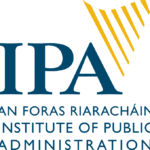Business Continuity Management (BCM) is a comprehensive management process that identifies potential threats to an organization and the impacts those threats could cause to business operations. It provides a framework for building organizational resilience with the capability of an effective response that safeguards the interests of key stakeholders, reputation, brand, and value-creating activities.
Key Components of BCM
- Risk Assessment:
- Threat Identification: Identifying potential threats such as natural disasters, cyber-attacks, pandemics, and equipment failures.
- Impact Analysis: Understanding how these threats could impact business operations, financial performance, and reputation.
- Business Impact Analysis (BIA):
- Critical Function Identification: Determining which business functions and processes are critical to the organization’s survival.
- Recovery Time Objectives (RTOs): Establishing how quickly critical functions must be resumed following a disruption.
- Strategy Development:
- Risk Mitigation: Implementing measures to reduce the likelihood or impact of potential threats.
- Recovery Strategies: Developing plans to restore critical functions and operations in the event of a disruption.
- Plan Development:
- Business Continuity Plan (BCP): Documenting the strategies, procedures, and responsibilities to ensure continuity of critical functions.
- Disaster Recovery Plan (DRP): Focusing on the recovery of IT systems and data.
- Training and Awareness:
- Employee Training: Ensuring all employees are aware of the BCM plans and their specific roles within them.
- Stakeholder Communication: Keeping stakeholders informed about the organization’s BCM strategies and their roles in them.
- Testing and Maintenance:
- Regular Drills and Exercises: Conducting regular drills to test the effectiveness of the BCM plans and make improvements.
- Plan Review and Updates: Continuously reviewing and updating the plans to reflect changes in the business environment, new threats, and lessons learned from drills and real incidents.
Benefits of BCM
- Enhanced Resilience: Increases the organization’s ability to withstand and recover from disruptions.
- Regulatory Compliance: Helps in complying with legal and regulatory requirements related to business continuity.
- Customer Confidence: Demonstrates a commitment to continuity and reliability, which can enhance customer trust and loyalty.
- Financial Protection: Minimizes financial losses by ensuring a quick and efficient recovery from disruptions.
- Operational Efficiency: Improves understanding of critical processes and interdependencies, which can enhance overall operational efficiency.
BCM is essential for ensuring that an organization can continue to function and deliver its products or services during and after a disruption. By identifying potential threats, assessing their impacts, and developing comprehensive continuity and recovery plans, organizations can protect their assets, minimize downtime, and ensure long-term sustainability.
















Comments